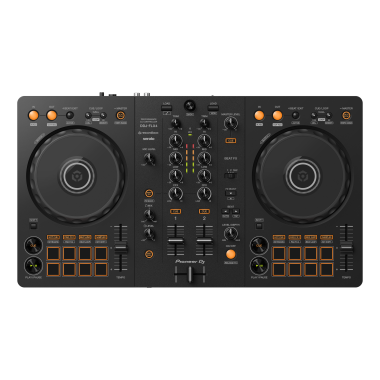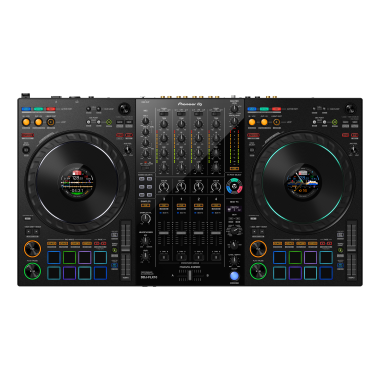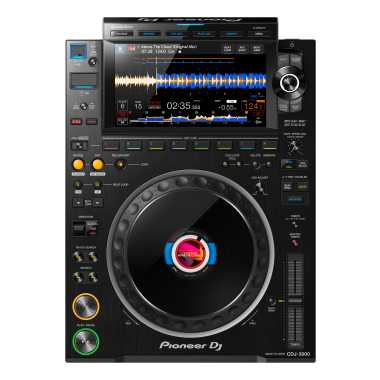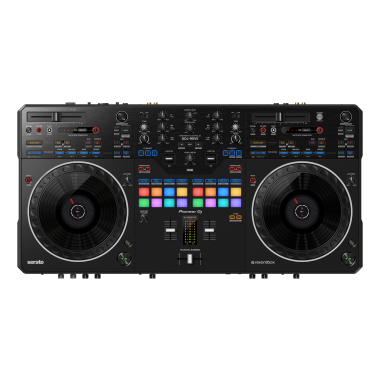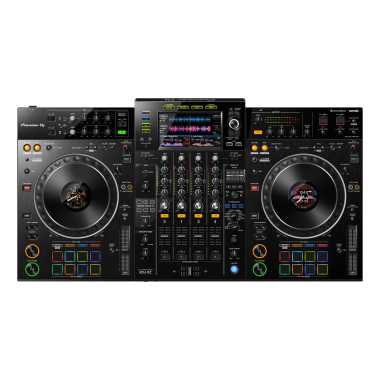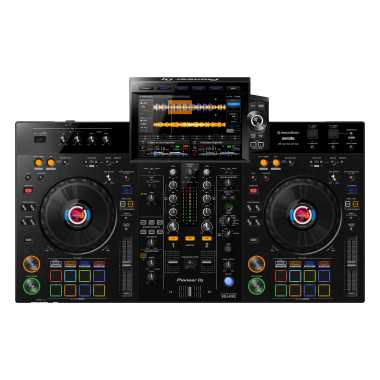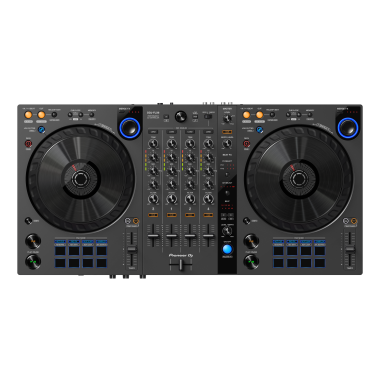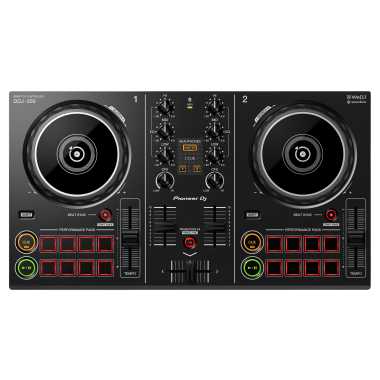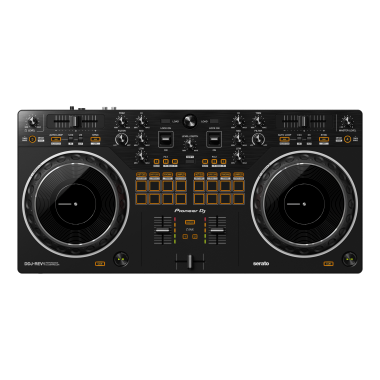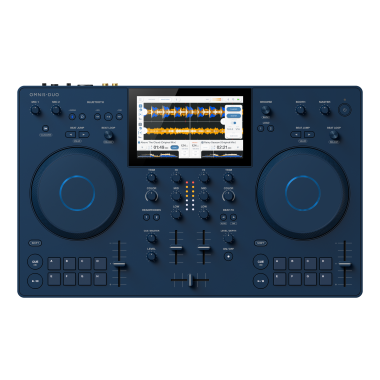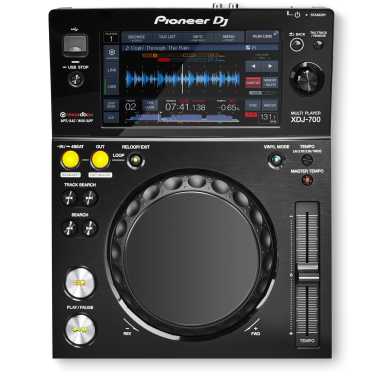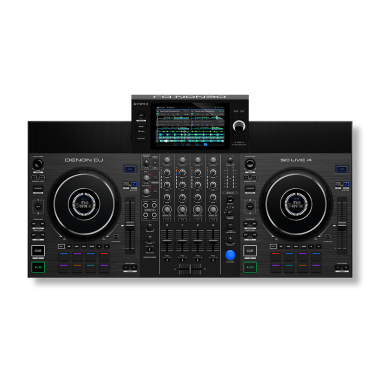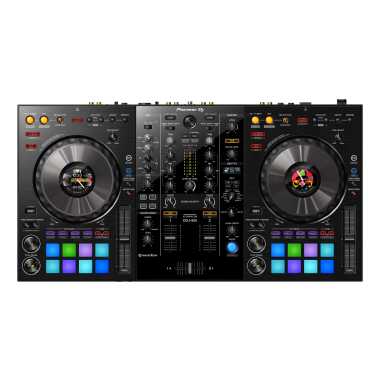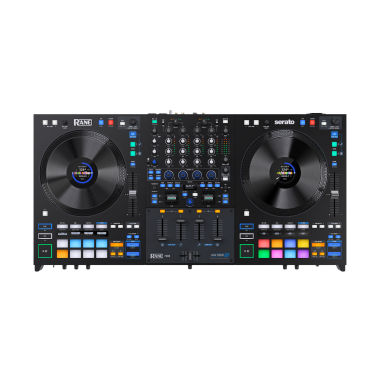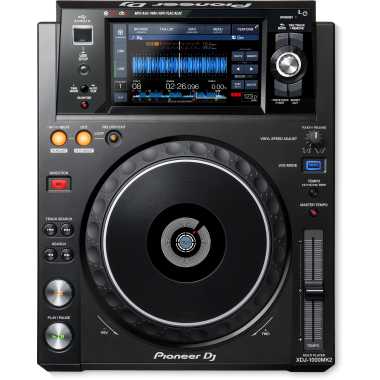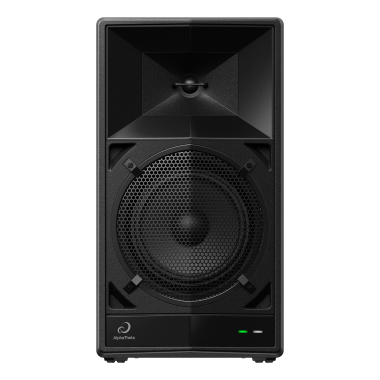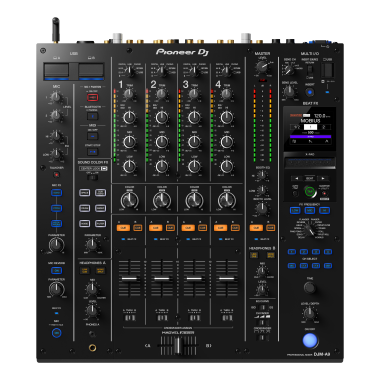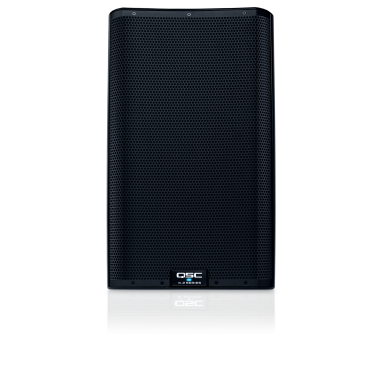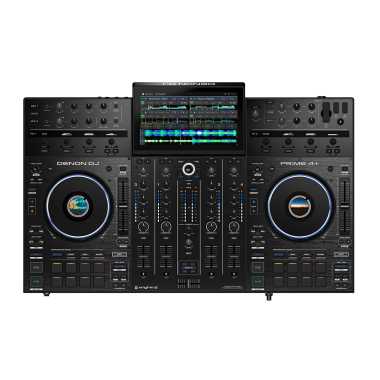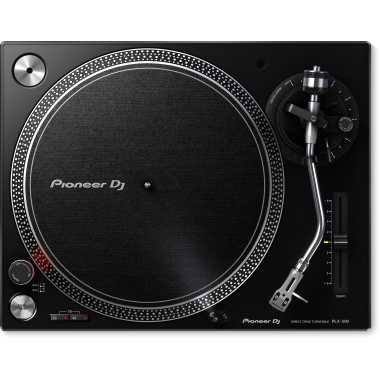Looking to buy your first piece of DJ equipment or upgrade your existing setup? Don’t know where to begin? DJ gear has evolved since the 90s when there was only 1 pro-grade setup. Today there are numerous option for both pros and hobbyists, but which one is right for you?
In this guide, we’ll examine the different categories of DJ equipment and discuss how they work together so you can determine what’s best for your needs.
Types Of Setups
Amongst DJs, it’s generally understood that there are three main types of setups, CDJs/media players, turntables and dj controllers. There are, of course, infinite combinations of these items to create your unique kit, but for the purposes of this article we’ll assume that most DJ’s use one of the following:
- CDJ Consisting of multiple CDJ’s hooked up to a mixer, this setup is now the industry standard in festivals, concerts, and clubs the world over. With the ability to play on multiple decks from a single USB drive, stellar sound quality, and rock-solid dependability, the CDJ setup is favored by almost every big-name DJ on the planet.
- Turntable Like the aforementioned CDJ’s, this combination consists of multiple turntables and a mixer in the middle. Before CDJ’s started to gain traction in the market in the early 2000’s, two turntables, a mixer, and crates of records was pretty much the only way to DJ. Still favored by many hip-hop and scratch DJ’s, the traditional turntable and mixer setup got a massive upgrade in the mid-2000’s with the advent of DVS software (we’ll get more into that in a bit).
- Controller The most cost-effective and portable of the three setups is the all-in-one controller. The past few years have seen an explosion in both the quantity and quality of these systems, and as a result there are now many different controllers available to DJ’s of all skill levels.
Gear Categories
Now that we’ve gone over the main setup types, let’s look at the specifics of each piece of equipment. We’ll look at how each functions on it’s own, how it can be combined with other equipment in your setup, and give an example or two to help guide you on your search.
- Mixer The heartbeat of any DJ setup is the mixer. If you utilize CDJ’s or turntables, you will hook these up via RCA cables to the mixer inputs, which then sends the audio signal out through it’s outputs. While there are seemingly endless mixer options to satisfy every type of DJ imaginable, let’s look at a breakdown of the main features of the different types of mixer.
- Channels Simply put, this refers to the amount of outboard equipment that can be plugged in and processed though the mixer. While this may seem pretty self-explanatory, there are certain benefits to each type that you should be aware of. Beloved by scratch DJ’s since the 80’s, two-channel mixers are more compact and historically have had less bells and whistles as their four-channel counterparts. While hip-hop has always preferred two channels; house, techno and EDM has always leaned toward more. With the ability to hook up four decks or any combination of outboard gear, plus the ability to have multiple DJ’s play on the same setup, it’s no surprise four-channel mixers are the go-to piece of kit for festivals and clubs worldwide. (2CH: Pioneer DJ DJM-S9, 4CH: Pioneer DJ DJM-900 NXS2)
- Effects In the past decade or so, most new mixers have some kind of on-board effects such as echo, reverb, or filters. This was not always the case, however. As mentioned above, many two channel mixers had no effects, while most of the four channel ones did. But when DVS software came into prominence in the mid-2000’s, most audio companies started outfitting their higher-end mixer products with on-board effects or buttons that could be mapped to an external source. (FX: Rane Seventy-Two, No FX: Pioneer DJ DJM-S3)
- Software Digital Vinyl System, or DVS, refers to software that gives DJ’s the ability to play digital music files (such as .mp3 or .wav) on standard CDJ’s or turntables via a timecoded signal. While we won’t get too in-depth about DVS here, it’s important to understand that some mixers come pre-loaded with DVS software, a sound card, and a user license for that specific system. One benefit to this is that DJ’s can plug their laptop or USB directly into the mixer without the need for an external converter box, another is that the mixer has some type of software control surface on the mixer itself. The most popular DVS systems are Serato DJ, Rekordbox DVS, and Traktor Scratch Pro, and each has partnered with at least one manufacturer to create mixers with on-board software. (Serato DJ: Mixars Duo MKII, Rekordbox DVS: Pioneer DJ DJM-250MK2, Traktor Scratch Pro: Traktor Kontrol Z2 by Native Instruments)
- Channels Simply put, this refers to the amount of outboard equipment that can be plugged in and processed though the mixer. While this may seem pretty self-explanatory, there are certain benefits to each type that you should be aware of. Beloved by scratch DJ’s since the 80’s, two-channel mixers are more compact and historically have had less bells and whistles as their four-channel counterparts. While hip-hop has always preferred two channels; house, techno and EDM has always leaned toward more. With the ability to hook up four decks or any combination of outboard gear, plus the ability to have multiple DJ’s play on the same setup, it’s no surprise four-channel mixers are the go-to piece of kit for festivals and clubs worldwide. (2CH: Pioneer DJ DJM-S9, 4CH: Pioneer DJ DJM-900 NXS2)
- Control Surface Now that we’ve sorted the mixer options, it’s time to look at the external media player or controller you’ll hook up to the mixer.
- CDJ When Pioneer first introduced the CDJ-500 in the mid-90’s, it changed the game forever. DJ-friendly CD players have gotten exponentially better and more user-friendly over the years, and as a result they have now become the standard over any other media player. Digital CD players now have as much control as turntables, with the added bonuses of pristine sound, tempo sync, no bass feedback, and the ability to link up to four units together off a single USB drive. (Pioneer DJ CDJ-2000 NXS2, Denon DJ SC5000)
- Turntable Once the only game in town, turntables have taken a bit of a backseat to CDJ’s in recent years due to the former’s many benefits. There is still a large subsection of DJ’s worldwide who will only use turntables, however, and that is due in part to their ability to play both DVS and traditional vinyl records as well as the absolute control the DJ has over their music. Ask any turntable purist and they’ll tell you that nothing feels like a turntable and wax. (Pioneer DJ PLX-1000, Reloop RP-8000)
- DJ Controller Different from the all-in-one systems we’ll get into below, these controllers are another type of control surface that must be used in conjunction with a specific software and/or external mixer. While some can be used to control virtual decks without the need for another media player, other controllers are more of an “add-on” performance tool that can trigger cue points, play samples, or control effects. (Traktor Kontrol F1 by Native Instruments, Pioneer DJ DDJ-SP1)
- CDJ When Pioneer first introduced the CDJ-500 in the mid-90’s, it changed the game forever. DJ-friendly CD players have gotten exponentially better and more user-friendly over the years, and as a result they have now become the standard over any other media player. Digital CD players now have as much control as turntables, with the added bonuses of pristine sound, tempo sync, no bass feedback, and the ability to link up to four units together off a single USB drive. (Pioneer DJ CDJ-2000 NXS2, Denon DJ SC5000)
- All-In-One Systems As the name implies, all-in-one controllers have both a mixer and multiple control surfaces built into one unit. Like CDJ’s, these systems have improved massively over the years in terms of features, build quality, and ease of use. While there are a plethora of all-in-one options for DJ’s of all skill levels, basically every controller shares the benefits of portability, ease of use, quick learning curve, and price. Most all-in-one units are either two or four-channel systems, and some have the ability to hook up additional CDJ’s or turntables. Similar to some of the mixers discussed above, all of the major DVS systems have at least one all-in-one controller that will only run on a laptop with that specific software. Additionally, multitrack DAW Ableton Live (while not a “traditional” DJ software) makes its own dedicated control instrument, in which entire performance and DJ sets can be executed using only the controller. (Serato DJ: Pioneer DJ DDJ-SZ2, Rekordbox DVS: Pioneer DJ DDJ-1000, Traktor Scratch Pro: Traktor Kontrol S8 by Native Instruments, Ableton Live: Push 2)
[Note: For more information on controllers, check our in-depth guide HERE] - “Other” While CDJ’s, turntables, and all-in-one controllers cover the vast majority of DJ setups today, there are a couple other options that don’t fit neatly in to those categories.
- Portablism Once an extremely niche market among a select few scratch DJ’s, portablism (“portable turntablism”) has exploded in the past couple years due to the relatively low price, a plethora of customization options, and obvious portability. When Vestax introduced the battery-powered Handy Trax in the early 2000’s as a record store listening tool, a few enterprising turntablists hooked up external faders to the line out and created a new industry in the process. A proper portablism setup traditionally consists of a battery powered turntable and portable crossfader, or two turntables and a small mixer. An excellent practice tool and a craft unto itself, the portablism movement has spawned multiple aftermarket fader and replacement part companies, as well as entire record labels and chapters across the globe. (Turntable: Numark PT01 Scratch, Fader: Mixfader Wireless)
- Apps After the development of DVS software, the next natural progression was DJ apps for phones and tablets. Similar to all-in-one controllers, a simplified mixing system is contained on the small screen and users can load and mix songs stored from the device through the ⅛” output. While the control is extremely limited and the sound quality leaves something to be desired, these apps can be useful tools for practice or in a jam. (DJay, Serato Pyro)
- Portablism Once an extremely niche market among a select few scratch DJ’s, portablism (“portable turntablism”) has exploded in the past couple years due to the relatively low price, a plethora of customization options, and obvious portability. When Vestax introduced the battery-powered Handy Trax in the early 2000’s as a record store listening tool, a few enterprising turntablists hooked up external faders to the line out and created a new industry in the process. A proper portablism setup traditionally consists of a battery powered turntable and portable crossfader, or two turntables and a small mixer. An excellent practice tool and a craft unto itself, the portablism movement has spawned multiple aftermarket fader and replacement part companies, as well as entire record labels and chapters across the globe. (Turntable: Numark PT01 Scratch, Fader: Mixfader Wireless)
DJ Equipment
-
Pioneer DJ DDJ-FLX4 - 2-Channel DJ Controller for Rekordbox and Serato - FREE 30-Day Access for DDJ-FLX4 Complimentary Course!
Regular Price: $359.00
Special Price: $299.00
-
Pioneer DJ DDJ-FLX10 - 4-channel Performance DJ controller
Regular Price: $1,899.00
Special Price: $1,599.00
-
Pioneer DJ CDJ-3000 - Professional DJ Multi Player
Regular Price: $3,059.00
Special Price: $2,549.00
-
Pioneer DJ DDJ-REV5 - Scratch-style 2-Channel Performance DJ Controller
Regular Price: $1,299.00
Special Price: $1,099.00
-
Pioneer DJ XDJ-XZ - Professional all-in-one DJ system
Regular Price: $2,999.00
Special Price: $2,499.00
-
Pioneer DJ XDJ-RX3 - 2-Channel Performance All-in-One DJ System
Regular Price: $2,499.00
Special Price: $2,099.00
-
Pioneer DJ DDJ-FLX6-GT - 4-Channel DJ Controller for Rekordbox, Serato, Virtual DJ and TRAKTOR PRO 3
Regular Price: $779.00
Special Price: $649.00
-
Pioneer DJ DDJ-200 - Mobile Device Compatible Smart DJ Controller - FREE 5-Day Class for DDJ-200 & WeDJ APP!
Regular Price: $189.00
Special Price: $159.00
-
Pioneer DJ DDJ-REV1 - Scratch-style 2-channel DJ controller for Serato DJ Lite - FREE 30-Day access for DDJ-REV1 complimentary course!
Regular Price: $339.00
Special Price: $279.00
-
AlphaTheta OMNIS-DUO - All in One Portable DJ System
Regular Price: $1,799.00
Special Price: $1,499.00
-
Pioneer DJ XDJ-700 - Multi Player
Regular Price: $919.00
Special Price: $769.00
-
Denon DJ SC LIVE 4 - 4-Deck Standalone DJ Controller with 7” Touchscreen, Built-in Speakers, and Wi-Fi Connectivity
Regular Price: $3,299.00
Special Price: $1,099.00
-
Pioneer DJ DDJ-800 - 2-Channel Portable DJ Controller for rekordbox DJ
Regular Price: $999.00
Special Price: $839.00
-
Rane FOUR - Advanced 4-Channel Stems DJ Controller
Regular Price: $3,299.00
Special Price: $1,499.00
-
Pioneer DJ XDJ-1000MK2 - Digital Performance Multi Player with 7" Touch Screen
Regular Price: $1,459.00
Special Price: $1,259.00
-
AlphaTheta WAVE-EIGHT - Portable DJ Speaker
Regular Price: $1,079.00
Special Price: $899.00
-
Pioneer DJ DJM-A9 - 4-Channel Professional DJ Mixer
Regular Price: $3,299.00
Special Price: $2,699.00
-
QSC K12.2 - K.2 12" Active Loudspeaker (Single) - $100 Temporary Pricedrop!
Regular Price: $1,251.99
Special Price: $899.99
-
Denon DJ Prime 4+ - 4-Deck Standalone DJ Controller
Regular Price: $3,499.00
Special Price: $2,199.00
-
Pioneer DJ PLX-500 - Pre-Amplified Direct Drive Turntable + USB (Black)
Regular Price: $449.00
Special Price: $369.00









